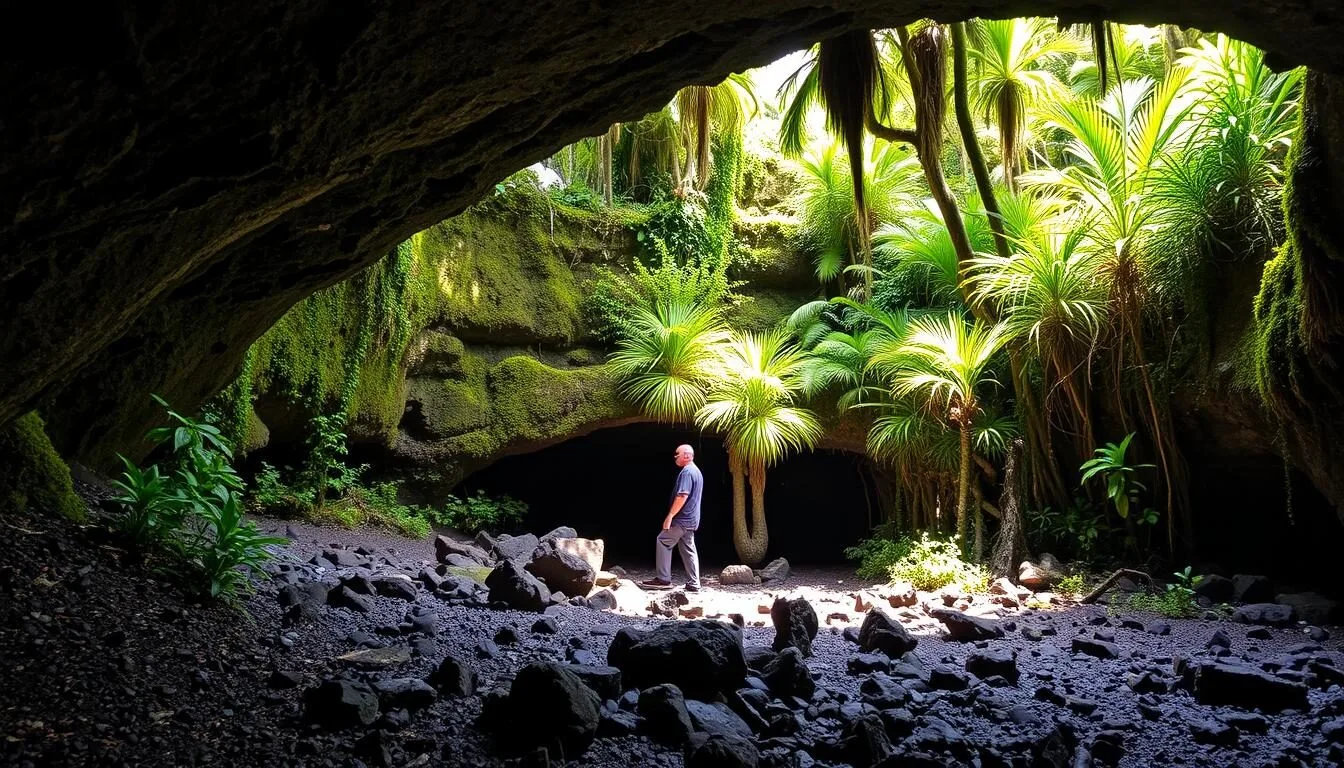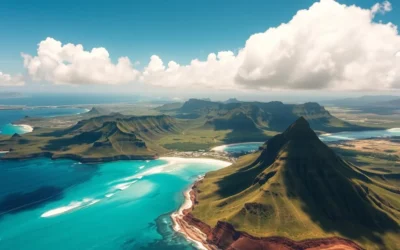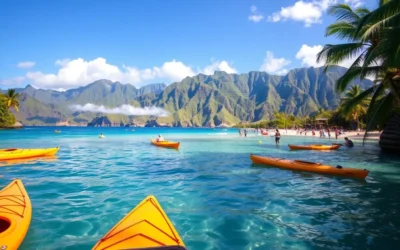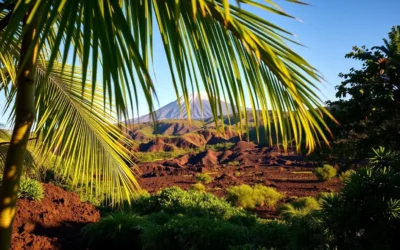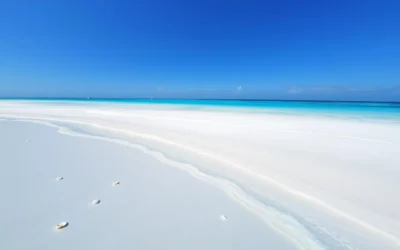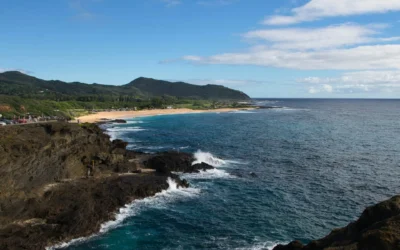✓ Accommodations ✓ Flights ✓ Rental Cars ✓ Tours & Activities
Discover the Natural Wonder of Nahuku
Thurston Lava Tube, or Nahuku, is a remarkable natural wonder within Hawaii Volcanoes National Park, offering a unique glimpse into the island’s volcanic past. As you walk through a verdant rainforest, the calls of native birds fill the air, leading you to this 500-year-old lava tube where a river of 2000-degree Fahrenheit (1093° Celsius) lava once flowed.
Nahuku, meaning “the protuberances,” possibly refers to the lava drippings that once hung from the ceiling. Unfortunately, these natural formations disappeared due to souvenir collectors after the tube was discovered in 1913.
This visitor information guide will provide you with comprehensive details about planning your visit, what to expect, and how to make the most of your experience at Nahuku.
Nahuku is not just a tourist attraction; it’s an important site for understanding Hawaii’s volcanic history and ongoing geological processes. The lava tube is a natural formation created by flowing lava that hardened on the outside while molten lava continued to flow within.
By visiting Nahuku, you’ll have the opportunity to walk through an ancient lava river channel in a safe and accessible environment. This guide will cover everything from practical visiting information to the geological and cultural significance of this remarkable natural wonder.
Discovering Nahuku: The Ancient Lava River
As you step into the Nahuku, you’re immediately immersed in the ancient history of Hawaii’s volcanic landscapes. This natural wonder, also known as the Thurston Lava Tube, is a significant attraction within the Hawaii Volcanoes National Park.
The Geological Marvel of Nahuku
Nahuku is a testament to the volcanic activity that has shaped the Big Island over thousands of years. The lava tube was formed as a result of the rapid cooling of lava flows, creating a hardened exterior that allowed the molten lava to continue flowing through, eventually draining and leaving behind a hollow tube.
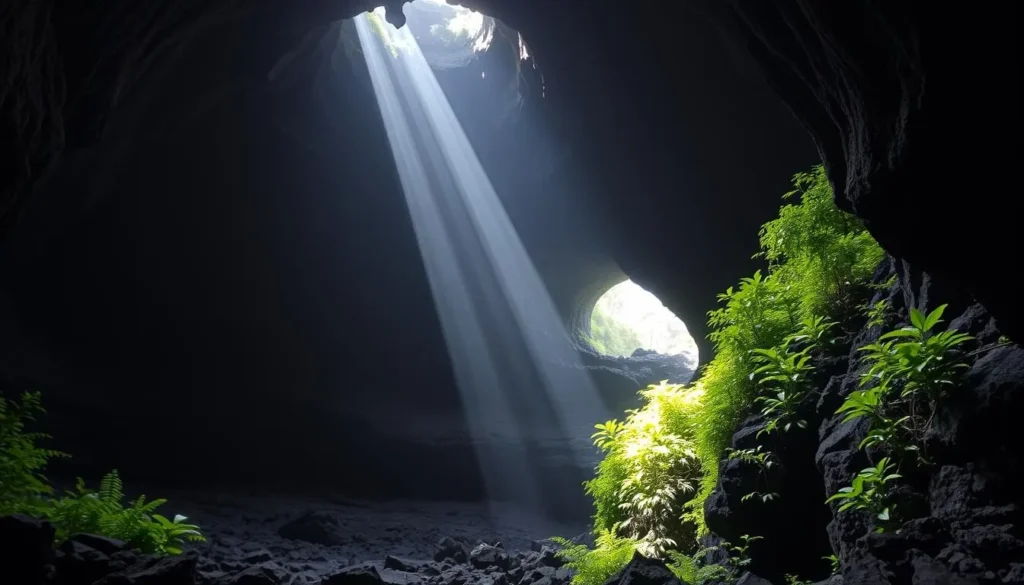
| Geological Feature | Description |
|---|---|
| Lava Formations | Stalactite-like formations that once hung from the ceiling |
| Tube Formation | Result of rapid cooling of lava flows |
| Age | Thousands of years old, shaped by volcanic activity |
The Cultural Significance and Hawaiian Name
The name “Nāhuku” translates to “the protuberances,” likely referring to the lava drippings that once hung from the ceiling. This site holds significant cultural importance, connecting to native understandings of Pele, the volcano goddess. Lorrin Thurston, a local newspaper publisher, discovered Nāhuku in 1913, leading to its alternative name as Thurston Lava Tube.
The tube has been an important site for both scientific study and cultural education for over 100 years, bridging geological interest with Hawaiian cultural heritage.
Planning Your Visit to Nahuku – Thurston Lava Tube, The Big Island, Hawaii
Before heading out to explore Nahuku – Thurston Lava Tube, visitors should be aware of the necessary details to plan their visit effectively. This includes understanding the current status and accessibility of the site, knowing the best times to visit, and being aware of the entrance and parking information.
Current Status and Accessibility
Nahuku is located within Hawai’i Volcanoes National Park, which is generally accessible. However, it’s crucial to check the current status before visiting, as conditions can change. The park entrance is a few miles west of Volcano Village, making it easily accessible for those staying in the area.
Best Times to Visit
The main parking area for Nahuku and Kīlauea Iki Overlook can become crowded, especially between 10 a.m. and 2 p.m. Visitors are advised to arrive early or consider visiting during less busy hours to avoid the crowds and secure parking.
Entrance and Parking Information
To reach Nahuku, follow Crater Rim Drive from the park entrance for a few miles until you reach the large parking area. If the main parking area is full, an overflow parking lot is available about 1/4 mile back toward the Visitor Center. There is a fee to enter Hawai’i Volcanoes National Park, but various passes, including the America the Beautiful Pass, are accepted.
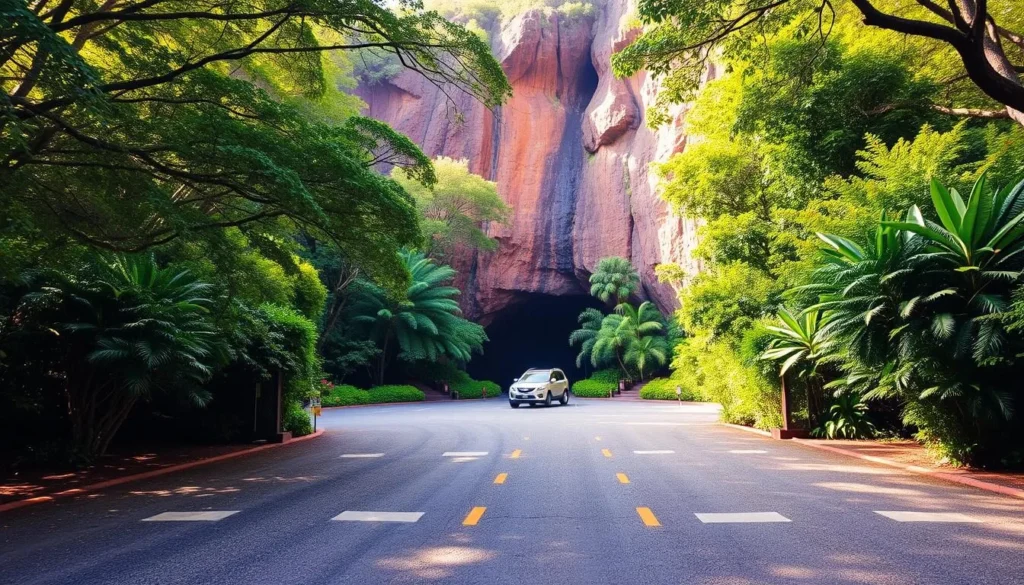
Navigating the Lava Tube Experience
Venturing into Nahuku, you’ll experience the thrill of exploring a volcanic lava tube. As you navigate through the dark passages, you’ll discover unique formations and gain insight into the volcano’s history.
What to Expect Inside the Tube
Inside the Nahuku lava tube, you’ll find a fascinating environment shaped by ancient volcanic activity. The cave features various formations, including lava stalactites and stalagmites, on its walls and ceiling. As you explore, take note of the unique textures and colors that surround you.
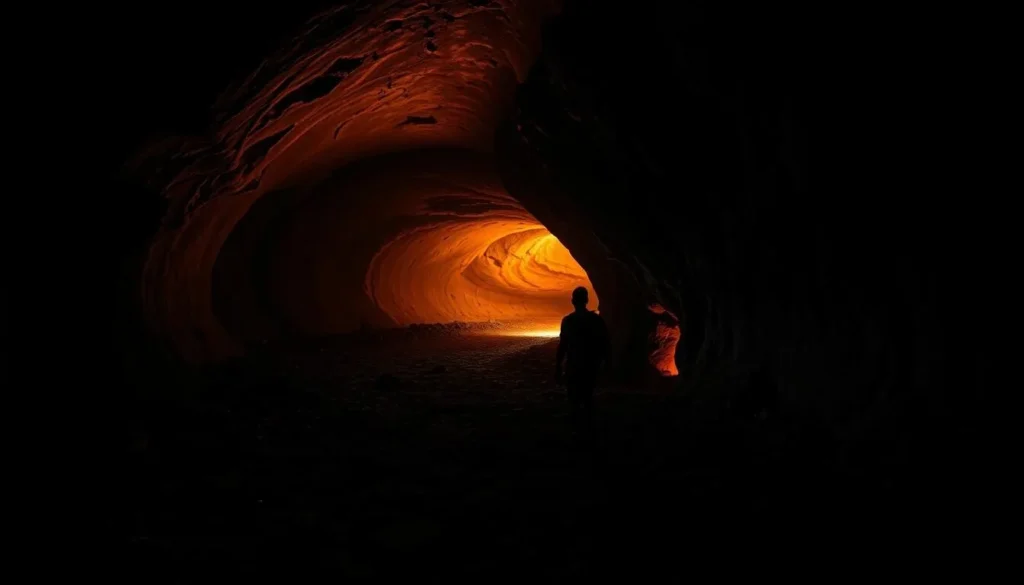
Lighting Hours and Flashlight Requirements
The lava tube is lit from 8 a.m. to 8 p.m. daily, thanks to a new lighting system installed by the National Parks Service in early 2018. For a more authentic experience, lights are kept off from 8 p.m. to 10 a.m. If you visit outside the lit hours, bring a reliable light source. Headlamps are recommended, especially during rainy periods when water may drip from the ceiling, potentially affecting electronic lights.
Trail Information and Hiking Options
As you plan your visit to Nahuku, understanding the trail options is crucial for a fulfilling experience. Nahuku offers a range of hiking trails that cater to different abilities and interests.
The Standard Lava Tube Loop
The standard Nahuku loop is a relatively easy 0.4-mile loop that is suitable for most visitors. This trail is paved and well-marked, making it accessible for those with mobility challenges.
Extended Hiking Opportunities
For those looking for a more challenging hike, the trails that include Kīlauea Iki are rated as moderate. These extended hikes offer a more immersive experience, taking you through diverse landscapes.
Trail Difficulty and Accessibility
It’s essential to assess the difficulty level of the trails and plan accordingly. The main parking area provides the most accessible starting point, while other trailheads involve more challenging terrain.
| Trail | Difficulty | Distance |
|---|---|---|
| Nahuku Loop | Easy | 0.4 miles |
| Kīlauea Iki Trail | Moderate | 4 miles |
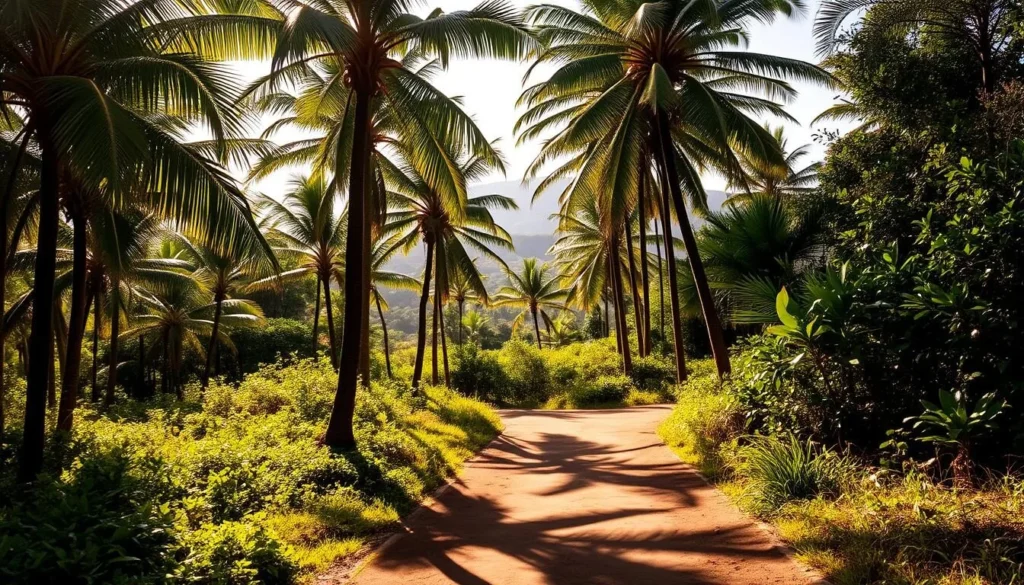
Essential Visitor Tips and Safety Guidelines
To ensure a safe and enjoyable visit to Nahuku, it’s crucial to be aware of the essential visitor tips and safety guidelines. As you explore the Thurston Lava Tube within Hawaii Volcanoes National Park, being prepared is key to a memorable experience.
What to Bring on Your Visit
When visiting the lava tube, it’s recommended that you bring a headlamp or a reliable flashlight, as the lighting inside can be dim, especially during early morning or late evening visits. Comfortable walking shoes and water are also advisable to ensure you’re prepared for the lava tube exploration.
Conservation Guidelines
Visitors are encouraged to respect the fragile environment within the lava tube. Staying on the designated path helps preserve the unique formations and ecosystem. Avoid touching the walls or ceiling, as the oils from your skin can damage the lava formations over time.
Safety Precautions in the Lava Tube
When exploring the Thurston Lava Tube, be mindful of your surroundings. Watch your step on potentially slippery surfaces, and be aware of the low ceiling in certain sections. If you have claustrophobia or breathing issues, be aware that the tube can feel confined and humid.
- Use proper lighting; headlamps are recommended, especially during non-lit hours.
- Never venture off the established path to avoid danger and damage to the environment.
- Keep a close eye on children, especially near the tube entrance and exit.
- Follow park ranger instructions during deteriorating weather conditions.
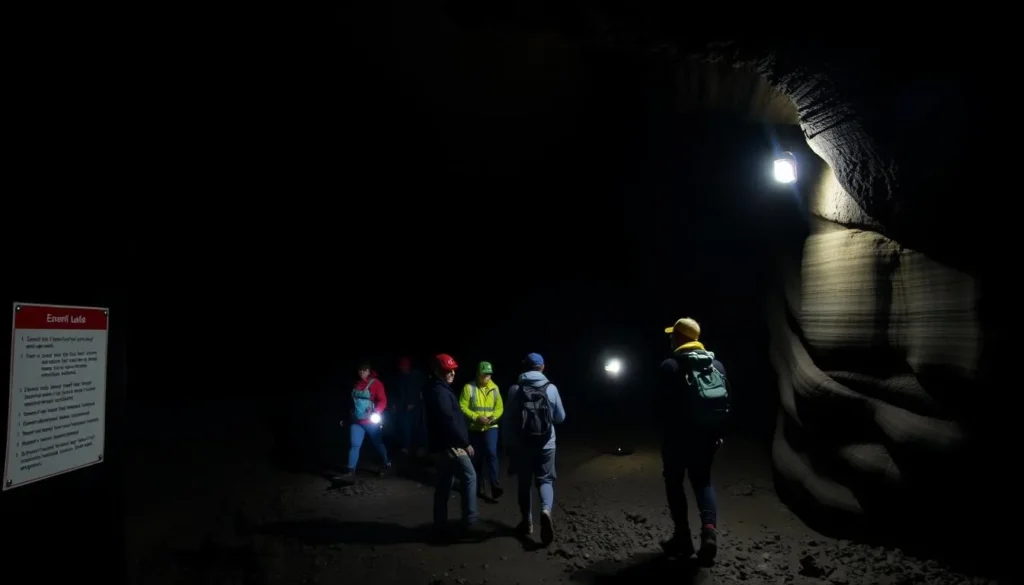
| Safety Precaution | Importance | Tips |
|---|---|---|
| Proper Lighting | High | Bring a headlamp or reliable flashlight |
| Staying on Path | High | Avoid venturing off the designated path |
| Supervising Children | High | Keep a close eye on children near tube entrances and exits |
The Unique Ecosystem of Nahuku
The ecosystem within Nahuku is both fascinating and fragile. As you explore the lava tube, you’ll notice the unique conditions that support a variety of life forms.
Flora and Fauna of the Lava Tube
The Nahuku lava tube is home to a range of flora and fauna that have adapted to its unique environment. The lava tube’s stable temperature and humidity create an ideal habitat for certain species. You may spot native Hawaiian plants and animals, such as the Hawaiian hoary bat, which calls the lava tube home.
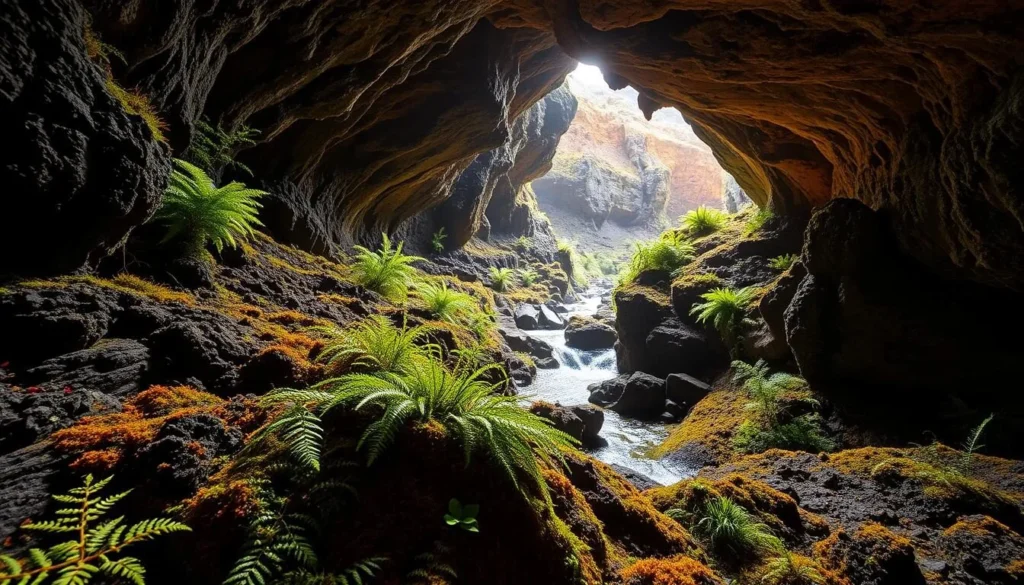
Conservation Efforts and Environmental Protection
However, human interaction has posed challenges, including disturbance to the habitat and the introduction of non-native species. In response, Hawaii Volcanoes National Park has implemented conservation efforts to protect the lava tube ecosystem. These initiatives include designated pathways, lighting restrictions, and educational initiatives to minimize human impact and maintain the natural biodiversity of the lava tube located along Crater Rim.
Visitor cooperation is crucial in conservation efforts. By following guidelines and respecting the natural environment, you can help preserve this unique ecosystem for future generations.
Conclusion: Making the Most of Your Nahuku Adventure
Step into the Thurston Lava Tube and uncover the fascinating history of volcanic activity on the Big Island. To make the most of your visit, plan ahead by checking the current status and arriving early or late to avoid crowds. Consider combining your lava tube experience with a hike on the Kīlauea Iki trail for a comprehensive exploration of Hawaii Volcanoes National Park. Remember to follow conservation guidelines to preserve this natural wonder. Take time to appreciate the geological marvel and the surrounding rainforest, making your visit to Nahuku a memorable adventure.
The above is subject to change.
Check back often to TRAVEL.COM for the latest travel tips and deals.
